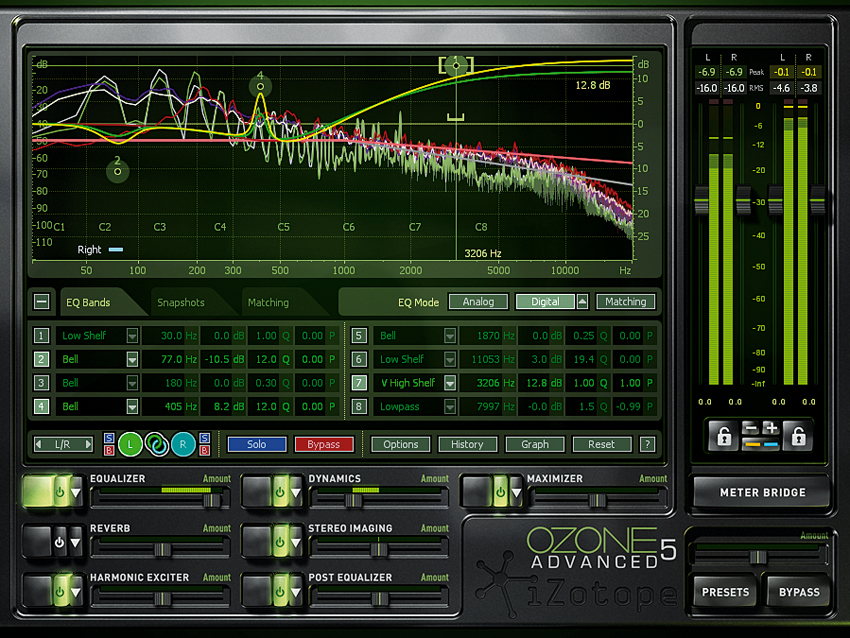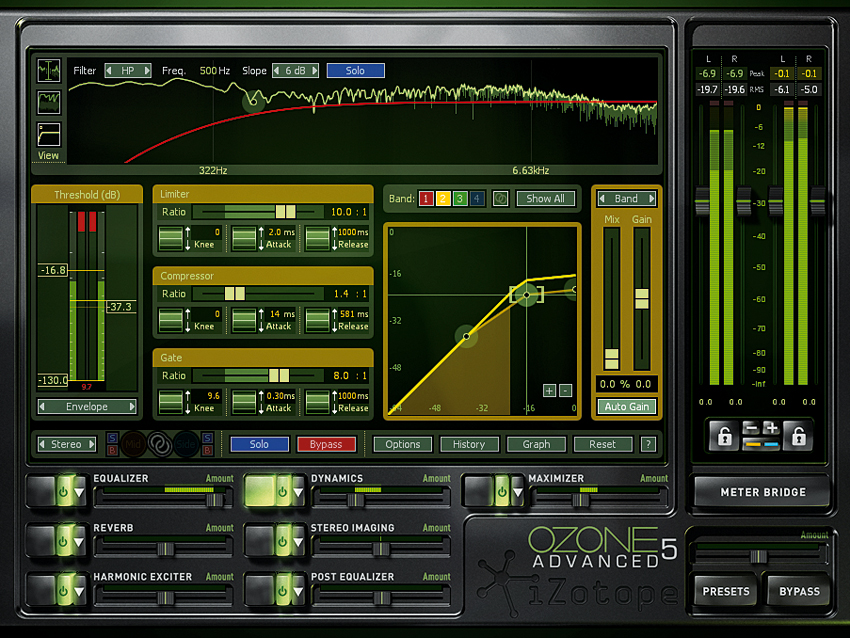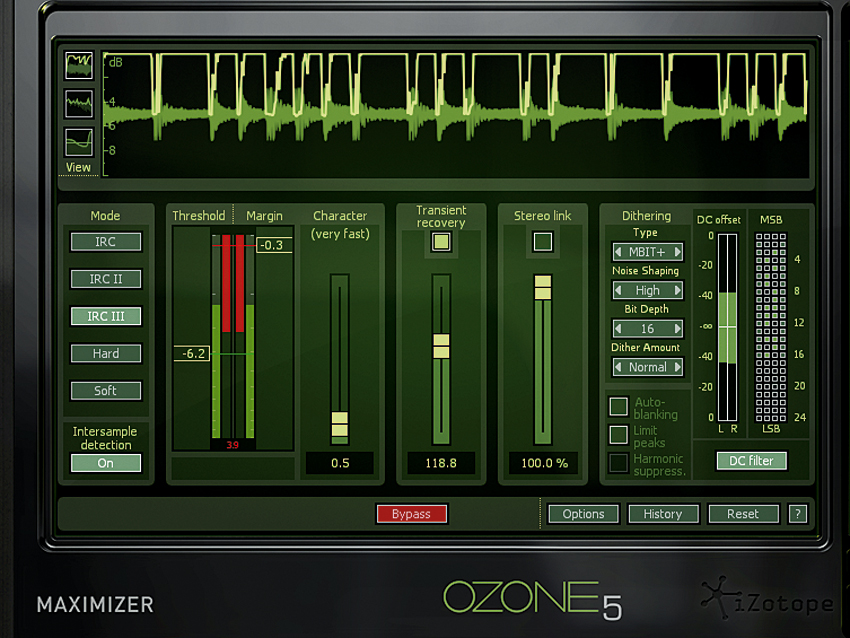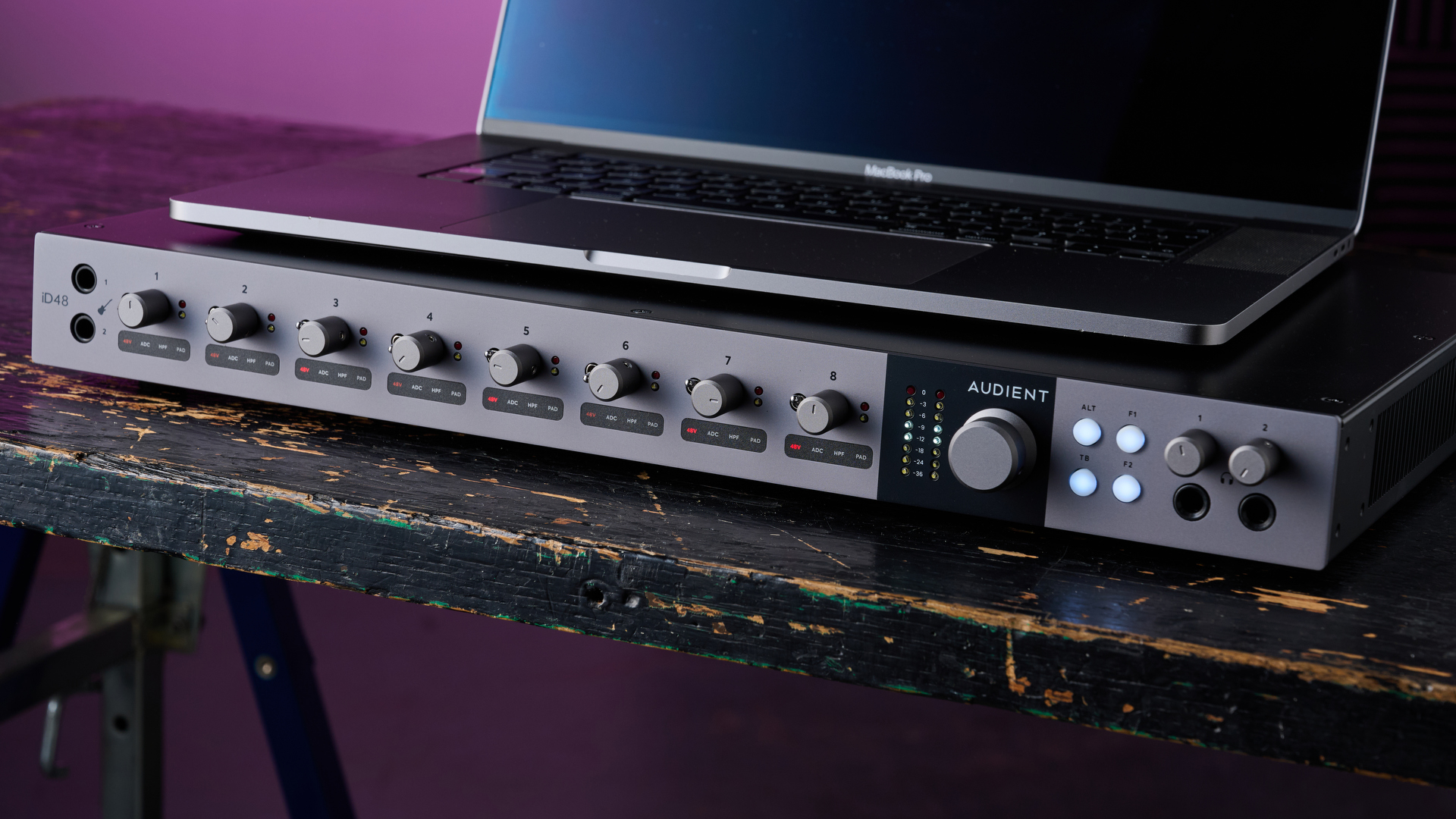MusicRadar Verdict
This massive update takes Ozone to another level, keeping apace with the best of today's mixing and mastering software.
Pros
- +
Flexible routing; powerful, sonically excellent modules; individual plug-ins for Advanced edition; Advanced has a cool 'stereoize' effect; deep options to keep tweakers happy; one of the best limiters out there.
Cons
- -
Can be initially daunting.
MusicRadar's got your back

iZotope Ozone 5

iZotope Ozone 5

iZotope Ozone 5
iZotope's Ozone has grown into one of the best software mastering options available. With v5 comes a bigger, better interface, more features and improved DSP processing.
Like the company's RX2 restoration software, Ozone now comes in two versions - regular (£169) and Advanced (£539). We tested the Advanced version, and there's a table on iZotope's site thatbreaks down the differences. Ozone 5 is inRTAS, VST, AU and DirectX formats.
Nuts and bolts
Ozone 5 features seven main processors: two identical parametric EQ sections, dynamics, stereo imaging, harmonic exciter, reverb and a maximiser with dither. These appear on seven module pages, each selected from the master controls at the bottom.
"For artifact-free punch and loudness, the new IRC III maximiser mode excels."
Here you can bypass modules, load module-specific presets and adjust processing amounts. Some of Ozone's modules are multiband (dynamics, exciter and imager) with up to four bands and several crossover modes. All modules can operate in mono, stereo, left/right and mid/side modes.
The EQs are 8-band with freely selectable shapes (bell, high- and low-pass filter, high- andlow-shelf) with some new shapes in v5 (such as vintage shelves and ultra-sharp brickwall cut filters). EQ can be analogue-modelled or digital. We're thankful of v5's new second EQ module - you can now apply EQ before and afterthe dynamics module, for instance.
Speaking of which, the dynamics section offers gating, compression and limiting, each with threshold, attack, release and hard/soft knee shape.
The latter is something we really missed in v4, and it's fully variable in the Advanced edition. Ratios below 1:1 also activate upwards compression and expansion.
The exciter includes six modes - retro (transistor), tape, tube, warm and Advanced-only triode and dual-triode modes - with the option to apply time delay to bands. An oversampling option is now included, which affirms iZotope's dedication to audio fidelity.
The multiband stereo imager is pretty simple, offering band-specific width and delay as well as a Stereoize function.
Ozone 5's reverb has been overhauled substantially. It's now a convolution/algorithm hybrid, with six main space types (including an EMT140 plate). Convolution handles the main early reflection aspect, while algorithms deal with the tail, allowing fine adjustment of the decay time and high-/low-frequency content.
The maximiser module is single-band with five limiting modes, most notably iZotope's latest intelligent release control (IRC III). Proprietary options continue with their MBIT+ dithering process (rates from 24 bit to 8 bit).
Advanced offers Meter Bridge, a resizable floating window with four selectable meters: spectrogram, spectrum analyser, vectorscope and level. You can use the supplied Tap plug-in to stream in audio from anywhere in your project (eg, guitar, drum, vocal and bass busses) and visualise them simultaneously on one graph. It'san excellent and practical addition.
Digging deeper
The Advanced edition has some exclusive features that particularly impressed us; first up, the EQ.
Here, not only can you select analogue filter shapes within the digital EQ mode, but there's also a mixed phase option for smoothly varying between minimum, linear and maximum phase on a per-band basis. You might use a gentle linear phase shelf up top and a minimum phase high-pass filter down below, to avoid pre-ringing in the bass.
For artifact-free punch and loudness, the new IRC III maximiser mode excels. All of Ozone's IRC modes now enable Transient Recovery, and when used carefully, this helps to retain edge and snap.
However, we more often found ourselves going back to the dynamics module with its new detector curves (tilt and high-pass) and True Envelope mode (very smooth - even more than RMS). Both detector signals can be solo'ed and adjusted, allowing better control and hence less fiddling at the maximiser stage.
The new knee adjustment (fully variable for Advanced) is welcome - we missed this in v4. There's also adjustable lookahead time.
On the bench
Unsurprisingly, Ozone 5's EQs are up to both surgical and musical tasks. From a creative rather than mastering standpoint, this is a great EQ in its own right, with everything from those outrageously steep brickwall filters to the vintage-style analogue shelves with overshoot.
Other processing nuggets that impressed us include the very hi-fi dual-triode exciter mode and the imager's Stereoize feature. On a mono source, the latter sounded wide, rich and slightly artificial (which isn't unexpected), while still maintaining excellent mono compatibility.
iZotope claim to have improved the underlying algorithms of every one of Ozone's modules, and it really does sound better. While we found v4 best for transparent, 'digital'-style mastering, there are so many flavoursome options available now that it can go beyond this.
That also means it's better suited to general processing, and we've found ourselves reaching for it increasingly during the mix stage. Metering feedback is excellent, though at times it can be quite small and detailed.
Go with the flow
With a plug-in as deep as Ozone 5, a sensible, efficient workflow is vital, and we're not left wanting here. There are various linking and grouping options to assist quick changes.
Beyond this, the main EQ spectral display is freely scalable and you can capture, colour code and overlay frequency snapshots. Alt+clicking in the display activates EQaudition (a band-pass filter) with Q tweakable on the mouse wheel - great for pinpointing specific frequencies.
Further processing flexibility lies in the Graph page. Here, not only can you freely re-order modules, but you can also dictate whether or not multiband modules share crossovers.
You could keep things simple with all multiband modules sharing the same crossovers, or set those crossovers independently. Very useful are the display options for the multiband modules, which include things like gain reduction, spectral analysis and stereo correlation.
For those who can't make their mind up, there's a full undo/redo history with four compare memories.
One of the niceties of the Advanced version is the 'component' plug-ins for the six main modules, turning Ozone 5 into a powerful suite of individual plug-ins. Oddly, however, Meter Bridge isn't available as a single plug-in - we hope this will be rectified very soon.
Other than this our only real criticism is that Ozone 5 does have a learning curve, so if you want a simple point-and-shoot mastering suite, this maybe isn't the one.
It does have loads of presets, and they're useful for seeing how certain things might be achieved, but generally we wouldn't use them for mastering. To get the kind of classy results that you'd hope to achieve with a plug-in like Ozone, you'll need to learn how to use it.
Once you get inside this plug-in, you'll find itsuses go way beyond mastering, which could be the justification you need to shell out extra for the Advanced version.
If you consider that you're essentially getting six very high-quality processors - some among the best in their class- then the price is easier to swallow.
Hear the iZotope Ozone 5 in action
Computer Music magazine is the world’s best selling publication dedicated solely to making great music with your Mac or PC computer. Each issue it brings its lucky readers the best in cutting-edge tutorials, need-to-know, expert software reviews and even all the tools you actually need to make great music today, courtesy of our legendary CM Plugin Suite.
“It has the ingenious ability to give you easy routing to external hardware with no re-patching”: Audient iD48 review
“If this was real, it would be really impressive. But since it’s not real, it’s really impressive": Watch the bonkers four-note piano
Watch UK electronic artist Lawrence Hart build a track from scratch in his hardware-stuffed studio










